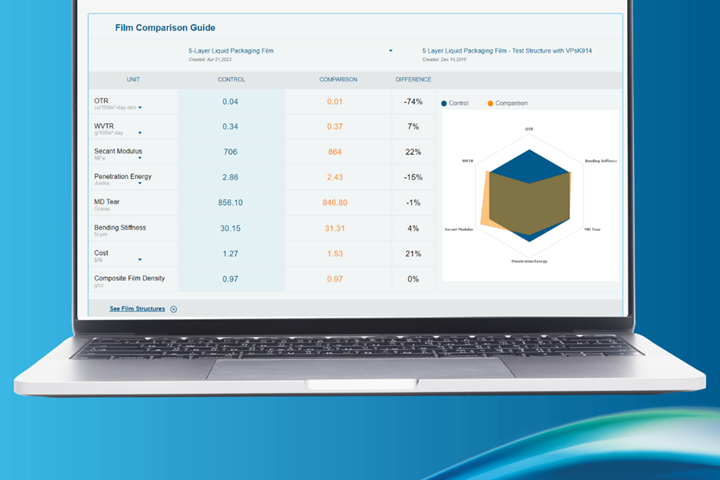Updated Interactive Tool for Predicting Multilayer Film Performance
NPE 2024: NOVA Chemicals presents the latest enhancements to its Bonfire Multilayer Property Predictor and new Syndigo rPE portfolio

Further enhancements to the interactive web-based tool for predicting multilayer film performance developed by NOVA Chemicals are being presented to existing and perspective customers. With a wide range of tools at their fingertips, customers can find the most promising resins and structures that meet their requirements without the extensive physical trials that are typically needed during the design phase. The Bonfire Multilayer Property Predictor (MPP) also helps customers reach their sustainability goals by supporting downgauging and the incorporation of recycled polyethylene (rPE) to ensure their packages are designed for recyclability. The enhancements of Bonfire MPP 6.0 enable users to do the following:
- Film Comparison Guide — Compare predicted properties of similar films with different resins, blends or layer ratios.
- Coex Structure Builder — Assess the effects of additives on final film properties.
- Customization — Add a custom resin to a private database.
- Profitability Module — Enhanced features to access and compare the cost and profitability of different films and processing factors.
- Team Access — Add multiple users within a company to collaborate on structures, pricing, customizations and more.
NOVA is also presenting the latest on its Syndigo rPE portfolio including rPE-0860-FC, a 100% postconsumer rPE mechanically recycled resin sourced from natural HDPE milk, water and juice containers, which is said to be well suited for both rigid and flexible packaging. Possible applications include beverage caps, cereal films, barrier film and all PE stand-up pouches. Due to the robust mechanical recycling process, including sortation, washing and post-extrusion devolatization to eliminate odor, the result is a best-in-class resin.
Related Content
-
Fundamentals of Polyethylene – Part 6: PE Performance
Don’t assume you know everything there is to know about PE because it’s been around so long. Here is yet another example of how the performance of PE is influenced by molecular weight and density.
-
Fundamentals of Polyethylene – Part 3: Field Failures
Polyethylene parts can fail when an inappropriate density is selected. Let’s look at some examples and examine what happened and why.
-
The Fundamentals of Polyethylene – Part 2: Density and Molecular Weight
PE properties can be adjusted either by changing the molecular weight or by altering the density. While this increases the possible combinations of properties, it also requires that the specification for the material be precise.





